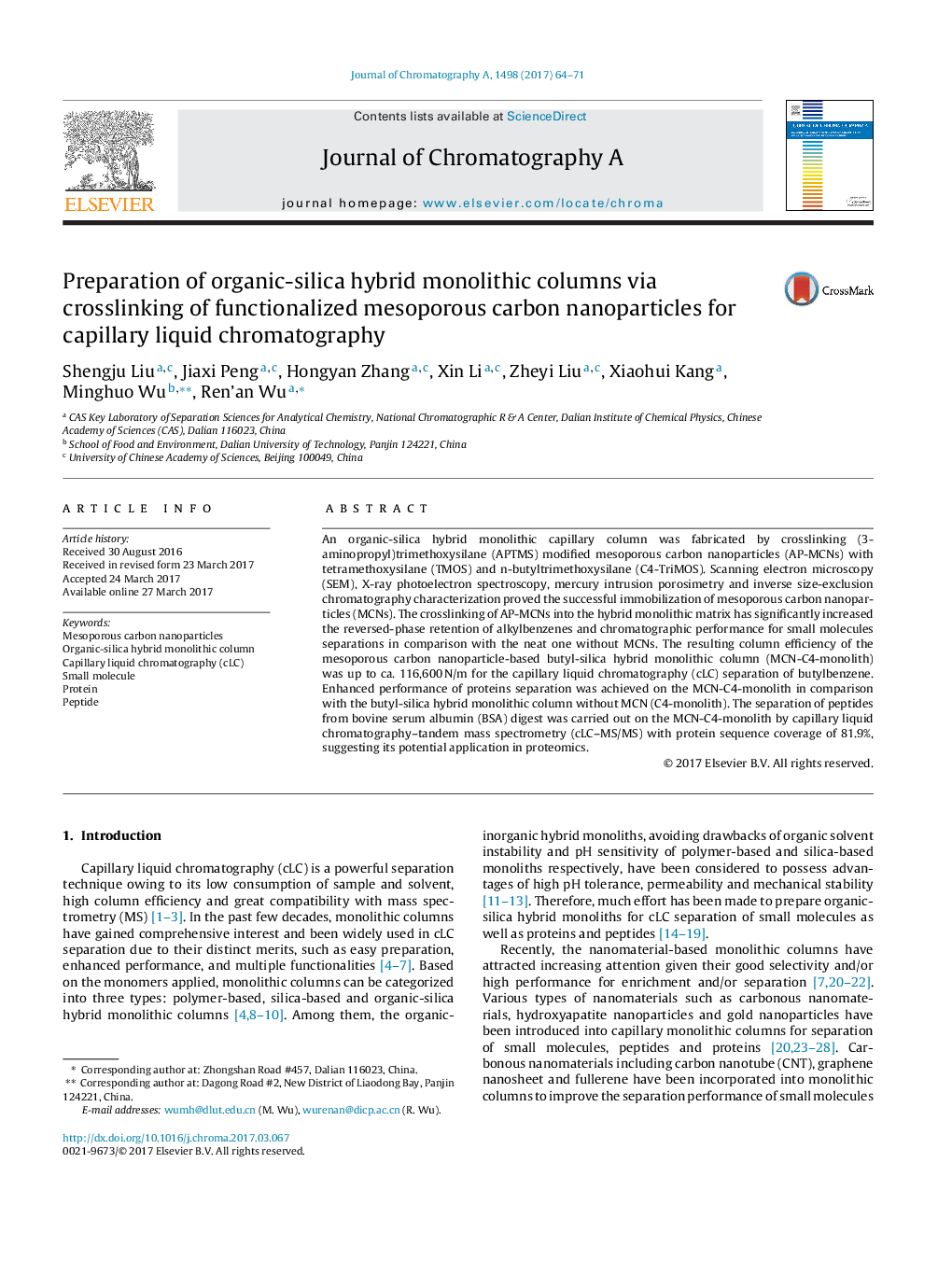| Article ID | Journal | Published Year | Pages | File Type |
|---|---|---|---|---|
| 5135236 | Journal of Chromatography A | 2017 | 8 Pages |
â¢MCNs are incorporated into butyl-silica hybrid monoliths as cross-linkers.â¢The crosslinking of MCNs increases specific surface area of the hybrid monolith.â¢The crosslinking of MCNs enhances the RP retention for separation of small molecules.â¢The MCN-incorporated butyl-silica monolith demonstrates high separation efficiency.â¢The analysis of peptides from BSA digest indicates its great potential in proteomics.
An organic-silica hybrid monolithic capillary column was fabricated by crosslinking (3-aminopropyl)trimethoxysilane (APTMS) modified mesoporous carbon nanoparticles (AP-MCNs) with tetramethoxysilane (TMOS) and n-butyltrimethoxysilane (C4-TriMOS). Scanning electron microscopy (SEM), X-ray photoelectron spectroscopy, mercury intrusion porosimetry and inverse size-exclusion chromatography characterization proved the successful immobilization of mesoporous carbon nanoparticles (MCNs). The crosslinking of AP-MCNs into the hybrid monolithic matrix has significantly increased the reversed-phase retention of alkylbenzenes and chromatographic performance for small molecules separations in comparison with the neat one without MCNs. The resulting column efficiency of the mesoporous carbon nanoparticle-based butyl-silica hybrid monolithic column (MCN-C4-monolith) was up to ca. 116,600Â N/m for the capillary liquid chromatography (cLC) separation of butylbenzene. Enhanced performance of proteins separation was achieved on the MCN-C4-monolith in comparison with the butyl-silica hybrid monolithic column without MCN (C4-monolith). The separation of peptides from bovine serum albumin (BSA) digest was carried out on the MCN-C4-monolith by capillary liquid chromatography-tandem mass spectrometry (cLC-MS/MS) with protein sequence coverage of 81.9%, suggesting its potential application in proteomics.
